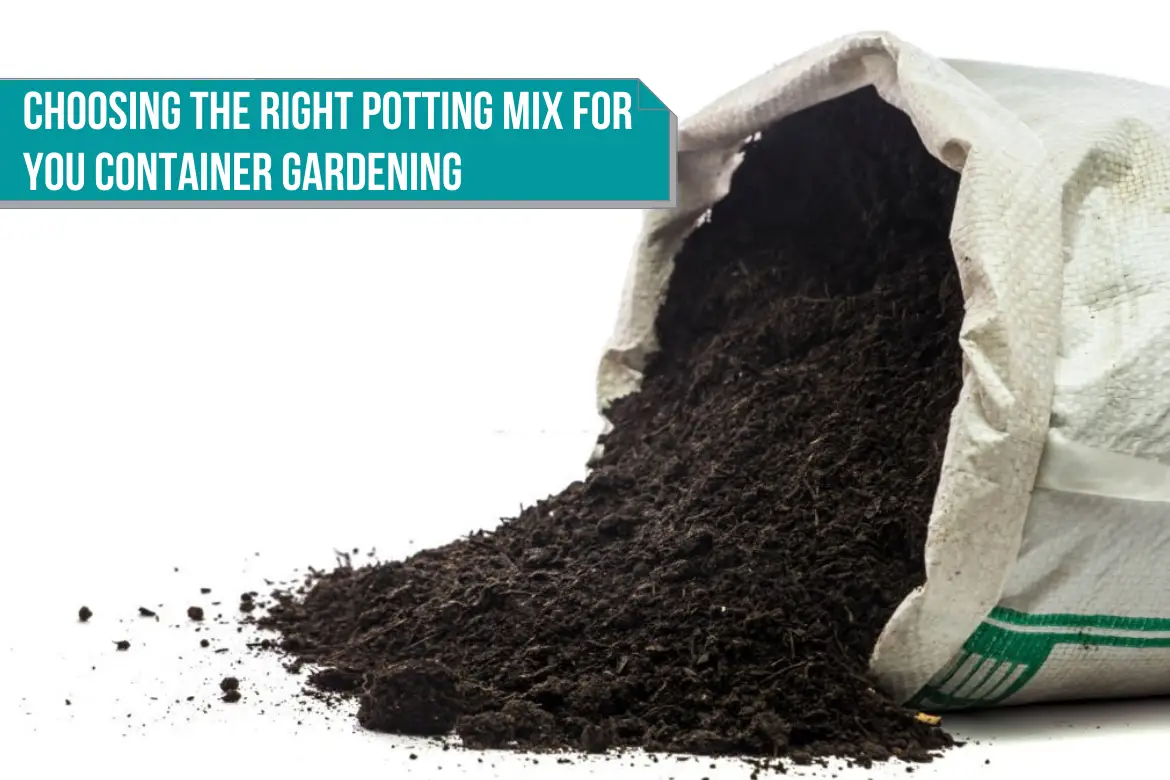The growing medium that fills containers and supports plants is integral to the success of a container garden.
A potting mix (aka potting soil) is a soil-less blend of ingredients used when growing plants in containers. Peat moss, vermiculite, sand, perlite, pine bark, compost, and other ingredients (but no “real” soil) are often found in this mixture.
The following characteristics are common to all good potting mixes:
- Excellent draining capability.
- Lightweight
- Easy to handle
It is also important to add that right location of the container, right choice of the container and appropriate light levels and choice of plant for container gardening is also as important as picking the right potting mix for your indoor plants.
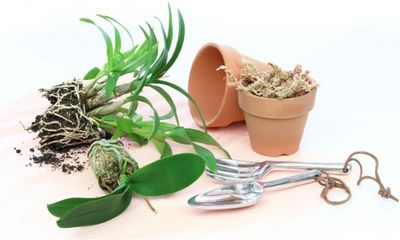
Each potting mix has its own unique characteristics, however. The texture, nutritional value, density, and water-holding capacity of potting mixes differ widely, and some mixes are superior to others.
Take the time to read the label before selecting a potting mix. First of all, look at the specific purpose for which the potting mix was designed.
For instance,
- For seed starting, lighter, finer-textured mixes are best.
- For potted trees and shrubs, you should use a pitting mix that contains a high percentage of coarse sand or pine bark.
- For cactus growth, sandy or gravely textured potting mixes are formulated.
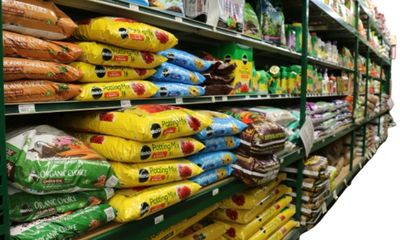
There are dozens of specialized potting soil mixes like these, each tailored to the needs of a particular group of plants, but for most container gardeners, the best fit is a general, all-purpose potting mix.
Read the label carefully and make sure the potting mix isn’t overly specialized, then look a bit deeper into the ingredients.
Potting mixes sold by companies can be quite good, but sometimes they can also be quite bad. When you open the bag, you may find it too heavy or too light, you may find pieces of bark in the bag, or you may find a mushy, smelly mess.
Most brands use their own proprietary blend to make their potting mixes. However, typically the following ingredients are found in all the potting mixes:
Sphagnum peat moss

A major component of commercial potting soils is sphagnum peat moss.
Peat is a very stable material that takes a long time to decompose. It is readily available and cheap. It acts like a bulking agent in the potting mixes without adding too much weight. Upon wetting, it holds water quite well.
Peat is usually treated with a wetting agent before blending with other ingredients.
Aerated and well draining, sphagnum peat moss has a low nutritional content and an acidic pH, ranging from 3.5 to 4.5.
To balance the pH of peat-based potting mixes, limestone is often added.
Peat harvesting is a subject of heated debate about whether it is sustainable. If you are concerned about this, use potting mix that contains coir fibers or cocopeat instead of peat.
Coir fiber
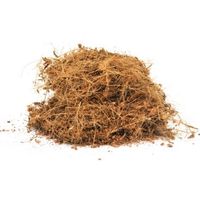
Coconut coir resembles sphagnum peat in the way it looks and behaves, but it is much easier to wet. It’s also known as cocopeat in some parts of the world.
Although it’s more expensive to purchase, it contains more nutrients than peat moss and has a longer shelf life.
The pH of coir fiber is near neutral.
It is generally sold in the form of bricks.
Coir fiber may be more difficult to find for container gardeners, but they are worth looking for. You can refer to the post how to make cocopeat / coir fiber at home, in case you wish to make it on your own.
Perlite

Perlite is volcanic glass that expands when heated, making it resemble small, white balls of Styrofoam.
A lightweight, sterile material, perlite can be added to potting mixes.
It holds between three and four times its weight in water. In addition, it increases pore space and facilitates drainage.
Many brands of potting mix use perlite because of its neutral pH.
Composted pine bark

Adding composted pine bark to potting mixes enhances air and water movement by increasing the pores between particles.
It is slow to decompose, but it may rob the potting soil of nitrogen. Hence, when composted pine bark is used as an ingredient, it is necessary to add a small amount of nitrogen fertilizer.
A potting mix for potted perennials and shrubs typically contains composted pine bark.
Sand

Adding coarse sand to potting mixes improves drainage and gives potting mixes more weight.
A higher proportion of coarse sand is used in mixes designed for succulents and cacti to ensure adequate drainage.
Limestone

To neutralize the pH of peat-based potting mixes, pulverized calcitic or dolomitic limestone is often added.
Natural deposits of these minerals make them readily available and inexpensive.
Vermiculite

The mineral vermiculite is mined from the earth and processed by heat until it expands into light particles.
In addition to being used in potting mixes, it is also used in a variety of products, including acoustic tiles and brake linings, as well as insulation and plaster.
It increases the porosity of potting mix.
Vermiculite increases the potting mix’s water holding capacity as well as adds calcium and magnesium to the potting soil.
Vermiculite mines are now regulated and regularly tested for asbestos contamination.
Fertilizers

Many times, peat-based potting mixes need to be supplemented with additional nutrients in order to support optimal growth of plants.
You should select a potting mix that contains a natural fertilizer, such as mined minerals, animal manures, plant materials, or animal byproducts. Try and avoid synthetic fertilizers as much as possible.
Using natural fertilizers will provide your containerized plants with a stable, long-term and eco-friendly source of nutrients.
You may find ingredients such as alfalfa meal, blood meal, bone meal, cottonseed meal, crab meal, feather meal, fish meal, greensand, rock phosphate, kelp meal, and dehydrated manures in potting mixes with natural fertilizers.
Compost
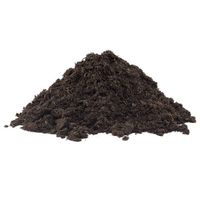
Compost is an excellent addition to potting mixes because of its excellent water-holding capacity and nutrient content. It also contains numerous beneficial microbes. However, it is not typically found in most commercial mixes.
For container gardening, I suggest mixing it with potting soil because it plays a huge role in promoting healthy plant growth.
You can buy a good quality compost or even make your own compost at home.

Sometimes, the potting mix packaging fails to mention any synthetic fertilizers.
In such cases look for the below phrases :
“feeds plants for 6 months” OR “includes slow-release fertilizer”
If you see these phrases on the front of the bag, then it is highly likely that the potting mix contains synthetic fertilizers.
You can always open a bag at the garden center (of course with permission) if you’re not sure about a particular brand of potting soil.
The potting mix should be fluffy and light, and its ingredients should be well blended.
How to choose a potting soil for indoor container gardening
- If the bag of potting mix is very heavy, don’t buy it. Such a mix is likely to be too dense to perform well in containers. Furthermore, it may be saturated with water or contain a high content of sand.
- Potting mixes containing topsoil or garden soil should not be used. Many of these mixes have poor drainage and aren’t sterile, thus weed seeds and plant pathogens may be present.
- Potting mixes with bad smells should not be used. Excessive nitrogen in the potting mix can make it smell like urine. Alternatively, foul-smelling mixes may signify a pathogen is present or that the mix has begun to ferment in the bag.
- You shouldn’t buy potting soil that contains sprouts, moss, or mold. Potting soil sold commercially shouldn’t contain such items.
Evaluation of the performance of a potting soil is important after using it. Plan to use the same brands next year after noting which brands worked best for you during the growing season.
If you test some different brands and evaluate them, you will be able to tell the difference between them after a few seasons.
IMPORTANT NOTE
Potting soil isn’t the same thing as “garden soil,” “topsoil,” “peat mix,” “manure soil,” “mushroom manure,” or several other products available at your local garden center. It is best to use these items as soil amendments rather than as a growing medium.
How to make potting mix for indoor gardening
While you can certainly straightaway use commercial potting soil, you can mix a high quality compost with the potting mix for added potency.
You can not only save a lot of money by making your own potting soil, but you can also customize it according to your specific needs. Additionally, you can reduce watering needs and encourage healthy plant growth.
You should mix a high-quality commercial potting soil with compost that has been sifted to remove large particles. The mixture should be in the ratio of 50/50. This will create a superior potting soil blend for container gardening.
However, if you are growing succulents or cacti, you should not add compost to the potting soil. These plants need a well-drained, coarse growing medium.
Compost tumblers or cement mixers are ideal for mixing large volumes of potting soil.
When blending smaller amounts, use a wheelbarrow, mortar mixing tub, or large bucket.
Ensure that everything is thoroughly mixed for a consistent result.
The final product needs to be mixed with compost, if the recipe does not already have compost inside.
If you do not have a compost pile of your own, you can buy one. But be careful when making a purchase.
A compost made of a mix of various decomposed ingredients instead of just a single one ingredient, such as composted cow manure or shredded wood, is the preferred choice.
The most ideal compost smells pleasant, has a fine texture, and has been decomposed so much that the original ingredients cannot be identified.
Following are some of the ways you can make your own potting mix for your indoor container gardening:
- Container gardening potting mix (with compost)
6 gallons (22.5 KG) – Coir fiber ( cocopeat ) OR Sphagnum peat
¼ Cup – Pulverized lime ( In case of using peat moss )
4¼ gallons (17 KG) – Perlite OR Vermiculite
6 gallons (22.5 KG) – Compost
Fertilizer Mix :
2 Cups – Greensand
2 Cups – Rock Phosphate
¼ Cup – Kelp meal
½ Cup – Bone meal
Add 1½ cups of this fertilizer mix to the potting mix. If you do not have access to the compounds to make the fertilizer mix, you can also add 1½ cups of organic-granular complete fertilizer. - Container gardening potting mix (without compost)
6 gallons (22.5 KG) – Coir fiber ( cocopeat ) OR Sphagnum peat
6 gallons (22.5 KG) – Perlite OR Vermiculite
4 tablespoons – Pulverized dolomitic limestone
¼ Cup – Bone meal
2 tablespoons – Blood meal - Container gardening potting mix for shrubs and perennial plants
1 Part – Coarse sand
1 Part – Perlite
1 Part – Compost
1 Part – Composted pine bark
1 Park – Sphagnum peat moss
Mix 1 tablespoon of lime for every gallon (3.8 Kg) of peat moss. - Container gardening potting mix for succulent and cactus
3 gallons (11.25 KG) – Potting mix ( Can use commercial or homemade )
2 gallons (7.5 KG) – Coarse sand
1 gallon – Perlite
The batch of potting soil you make should be used as soon as possible.
In any case, if you need to store the mix, seal it in plastic garbage bags and place it somewhere cool and dry. In a shed or garage, you can also cover it loosely with plastic and pile it on a tarp.
One more bonus recipe for making potting mix at home for container gardening:
For one cubic yard of mix, here’s the recipe.
*The cubic yard is a pile that measures 3′ by 3′ by 3′.
As long as the ratios are maintained, you can make a smaller amount.
Step 1 : Mix the following
½ Cubic yard – Sphagnum peat moss or coir fiber /cocopeat
½ Cubic yard – Vermiculite
Mix the above ingredients on a clean surface such as plastic tarp or even a clean concrete patio.
You can use a wheelbarrow or garden cart for smaller quantities.
Break up peat moss as necessary so that it is not clumped together.
Continue mixing until thoroughly combined, adding warm water as needed to lightly moisten the material.
Step 2 : Adding more to the mix
5 pounds – Limestone
5 pounds – Blood meal
10 pounds – Bone meal
Add the above ingredients to the mix from step 1.



Do not use old potting mix
A potting mix becomes worn out from exposure to the elements and from being used to grow plants.
Organic matter degrades, the soil becomes compacted, and nutrients are depleted. Furthermore, disease spores and insects find their way into the potting mix.
Replace old potting mix with a fresh one when it’s time to replant a container. Dump the old potting soil in the garden or compost bin.

